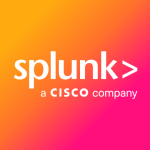What is our primary use case?
Generally, it is used for infrastructure and network monitoring. We've been using it for monitoring systems and application infrastructure. It goes through the whole stack, and that's what we like about it. It can also be extended, but I wouldn't consider that as the primary use case.
It can be deployed on-premise as well as on the cloud. It is meant to be on-premise, but some providers like us can use Zabbix on the cloud and provide it as a SaaS model. It is predominantly deployed on-premise. We mainly use versions 4.x and 5.x.
How has it helped my organization?
Just like any monitoring tool, the major benefits would be being proactive about and avoiding downtime and being able to do capacity planning of the infrastructure. It is about having more knowledge about what you own in terms of infrastructure. Once you do that, you're able to make educated decisions. They are not guesswork.
What is most valuable?
Its overall flexibility is most valuable. When our customers have some custom applications that are not necessarily covered by the community or a standard monitoring tool, we use Zabbix to build our own modules with our own templates. This feature has been useful in using Zabbix for infrastructure and IT monitoring. It has also been useful for industrial equipment monitoring.
Zabbix is very lightweight. It is efficient in terms of performance because it doesn't use a lot of resources.
What needs improvement?
Its UI should be improved. They did some improvements in version 5, but it could benefit from some more work.
Its integrations should also be improved. They've been active for one year, and they seem to have noticed that. It has new integrations, but it could benefit from more integrations.
As far as I know, there is no model to push statistics, metrics, or events towards Zabbix. This type of API isn't yet there, whereas some other tools provide an API for this.
For how long have I used the solution?
We have been using this solution for around five years.
What do I think about the stability of the solution?
It is very stable. We've had it in our customer environments for four years, and the only thing we had to do was to tune the database because we have more metrics. It never went down.
What do I think about the scalability of the solution?
One of our customers is monitoring a few hundred devices. It can be used for a few thousand devices without much complexity, but beyond that, it is difficult to scale. We don't use Zabbix beyond that, and we try to avoid it for larger deployments. You can create a distributed setup that helps with scalability. They have a distributed collector and a proxy that can be used for that.
It doesn't consume a lot of resources and is efficient in terms of performance. You can put it on a Raspberry Pi and monitor a few devices. If you push performance to the limit and have too many devices, I'm not sure how good it is then.
How are customer service and technical support?
Our customers have subscribed to technical support, but they never really used their technical support. Zabbix has never failed. Our guarantee had expired, and we started our own maintenance on top of Zabbix with some government clients, but we never had to use Zabbix support.
How was the initial setup?
Its initial setup is very straightforward. You need prior knowledge of Linux, but you don't need specific knowledge of Zabbix to deploy it. It is really straightforward and lightweight. Its deployment could take as little as one hour per person.
You simply download the packages. For a small deployment, you install them in the same box. There are three main components that you have to put in the same place, and that's it. It is not really complex to set up. Zabbix isn't really geared like some of the other solutions where there are different modules for each part. Zabbix is monolithic. You have a core system that can do everything, and it is extended with the plugins that provide additional integration and monitoring, but the framework and the UI are in one package or software.
You definitely need someone to administer the platform after it is deployed. Otherwise, it is a bad deal. The number of people required for maintenance depends on the site. It can start with someone part-time, and it can end with two full-time persons developing scripts and plugins. Post-deployment maintenance also depends on the monitoring requirements. You can't have a monitoring solution that is central to your network and sees everything but doesn't change as your network changes. If your network changes, your solution has to adapt to it, which is normal for all monitoring solutions. Similarly, if you have too many metrics, you would require some database tuning as the solution gets bigger.
What's my experience with pricing, setup cost, and licensing?
It is open source. If you want to have a subscription or official support, you can pay for it. They have different plans, which are not that expensive. The plans are based on per monitoring server, not per monitored equipment. So, it is not at all expensive, and you can also live without the support if you want a cheaper option.
Which other solutions did I evaluate?
We evaluated different solutions in 2012 and 2017. We favor open-source solutions or open-core solutions that support open-source models. These open-core solutions are not open source, but they have an open model. They come with plugins. Such solutions are the best because they offer flexibility, and you can add your own monitoring on top of them. You can add your own plugins and extend a solution beyond its original capabilities. A proprietary solution such as SolarWinds is not that flexible because it is closed. You have to find a suitable plugin or module, but you can't really develop something on top of it. There is an SDK, but it is really hard to use. I've never rarely seen it used.
Zabbix is a solution we offer to answer some of the main customer monitoring requirements . The solution that we go for depends on the environment in which it will be used. We select one of these depending on a customer's environment and prerequisites. We see whether a customer's environment is really rich, and how many customized and standard applications a customer has. Zabbix also has more integrations with on-prem infrastructure and cloud solutions.
In comparison with Nagios and alike solutions, Zabbix is less fragmented providing better integrated components. They also invested in the last years quite a lot of development efforts to build new custom integrations.
What other advice do I have?
I would advise others to know scripting and Linux administration. These are the prerequisites. If you don't know these, you either have to get better at them or get an expert to help you. After this solution is deployed, you should have someone to administer the platform. Do not leave the platform as it is. It should evolve with the network. Otherwise, it becomes irrelevant.
I would rate Zabbix a nine out of ten. It is a very good product, and it is for a good reason that we have chosen Zabbix as part of our monitoring portfolio.
Which deployment model are you using for this solution?
Hybrid Cloud
If public cloud, private cloud, or hybrid cloud, which cloud provider do you use?
Disclosure: My company has a business relationship with this vendor other than being a customer. We are official partners of Zabbix which is used in our monitoring services portfolio.

















